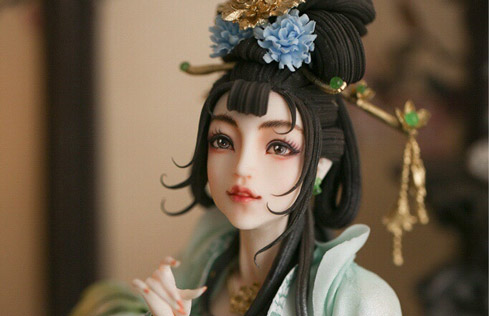Dedicated craftsman makes toys of joy
When talking to a Chinese about windmills, the first comment you will most likely hear will not be about the giant machines used to capture wind power. Instead, you will hear stories about a simple colorful toy and happy memories of the old times, when toys were a luxury.
When METRO visited the home studio of Wang Guohua, the inheritor of the tradition of the Beijing windmill, the 63-year-old was busy making wheels for the windmills.
"Sorry about the mess. It's either sticks or mud in our home," said Niu Junhua, Wang's wife and assistant.
Windmills, which were first depicted in paintings during the Song Dynasty (960-1279), were originally used as part of the honor guard to welcome the God of Wealth on the second day of the Chinese new year.
"After that people would stick windmills near their doors and let them break into pieces to keep away the God of Poverty, who legend has it feared nothing but broken things," said Wang.
Made from sorghum stalks, gumming dirt, paper and prods, a good windmill should have a reasonable structure, a colorful look and a light silvery sound when standing against the wind, Wang said.
There are hundreds of detailed stages in the making of a windmill, but there are four main steps: cutting the stalks and connecting them with prods to form the structure; dyeing the paper and sticking it onto a loop to form the wheel; mixing mud with cotton to form the drum and covering it with stretched kraft paper, and finally connecting all the parts.
"Getting the raw materials is the biggest problem we are facing right now," said Wang.
He said the sorghum stalks should be tall and thick, but that type of sorghum produces a smaller crop and therefore few people grow it these days. The mud used has to have a high viscosity, which can only be found 5 to 10 meters below the ground. The dye must be extracted from plants and cannot be found in Beijing.
"My wife still keeps some land in her hometown in Hebei province to grow the sorghum we need," Wang said. "We collect the mud from construction sites when they are laying the foundations. Luckily we can still get the dye in Hebei province."
Everyone in Wang's family knew how to make windmills, from his 92-year-old mother, who died three years ago, to his granddaughter, who is 15.
Wang and Niu first got to know each other through their mutual fondness for folk toys. Apart from windmills, they also enjoyed making kites and collecting crafts such as paper-cuts, dough and mud figurines.
"Though they are all hobbies now, for us they were first of all a means of survival," said Wang.
In the 1970s, Wang supported his family of five with a 36-yuan monthly salary. To make ends meet, the couple tried all kinds of odd jobs, such as processing clothes and pasting matchboxes. The latter sold at 7 jiao for 1,200. Wang said it took four people a whole night to make 900.
The next thing he tried was making windmills, after he met his mentor Cao Changshan, whose family had been earning a living by making windmills for four generations.
"It was not a good job," Wang recalled. "Most of the windmill makers were farmers at that time. They would make hundreds of windmills in slack farming season, and sell them at temple fairs during Spring Festival to earn some extra money."
Wang still remembers the Spring Festival of 1979, when the 500 windmills his mentor made were all sold at the temple fair, making more than 200 yuan, almost half their annual salary.
"They sold so well because it was just after the 'cultural revolution' (1966-76), and people hadn't seen toys like windmills for more than 10 years," he said.
Seeing that profit, Wang started to make windmills in 1980 but never made it his main work.
"What people longed for at that time was nothing but a stable job with a regular salary," he told METRO.
The situation started to change after 2000. Now, Wang can sell more than 2,000 windmills at one event; and since 2007, when the Beijing windmill was listed the nation's intangible cultural heritage, he has been happy to participate in all kinds of fairs and activities.
"I still recall the days when we were chased by urban management officers," he said. "People started to call me 'master Wang'."
The master is still perfecting his windmills by finding better materials and learning from other craftsmen.
"What I'm doing is a business, which sells my craft, carries on a folk custom and passes on traditional culture," Wang said.






















